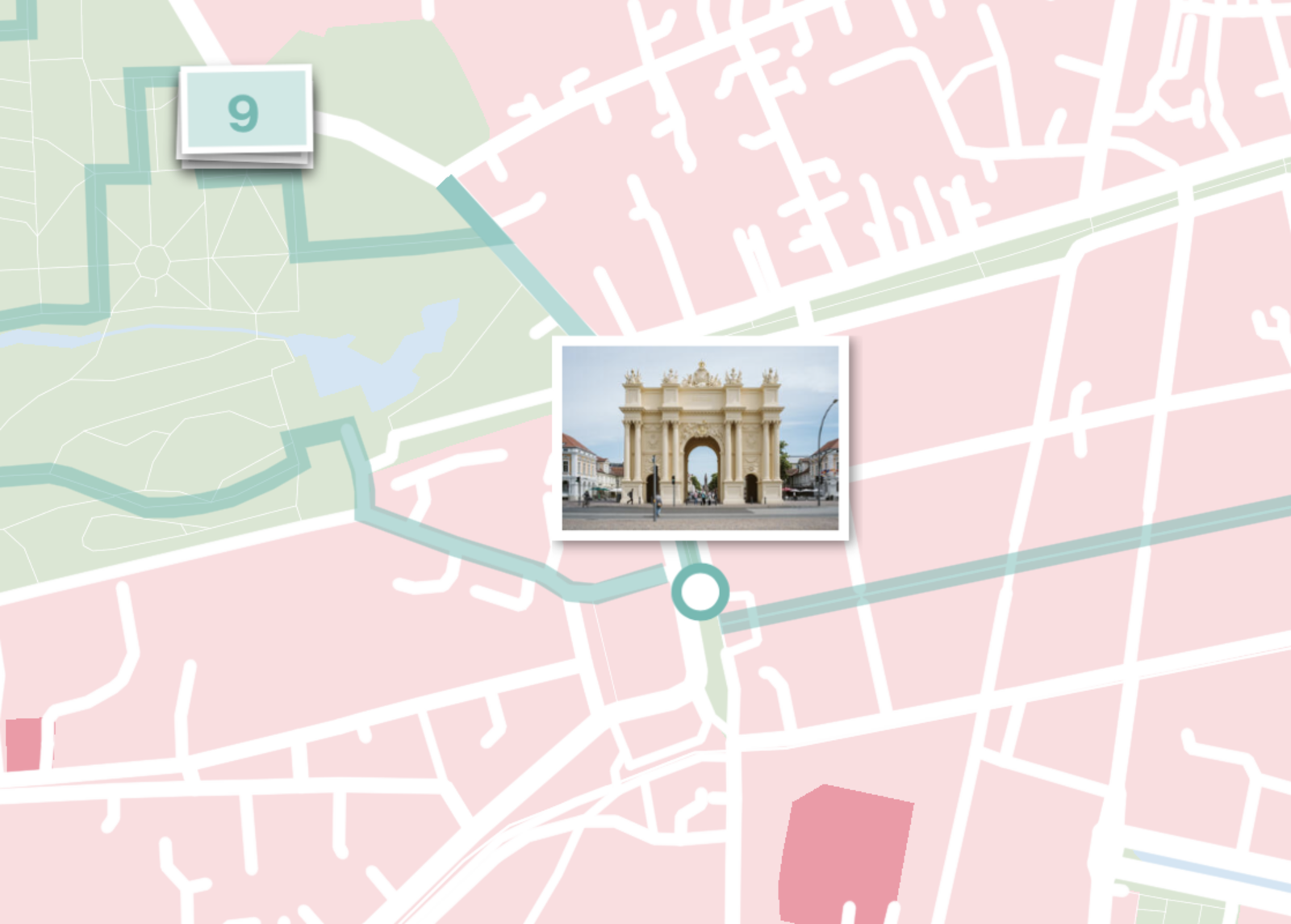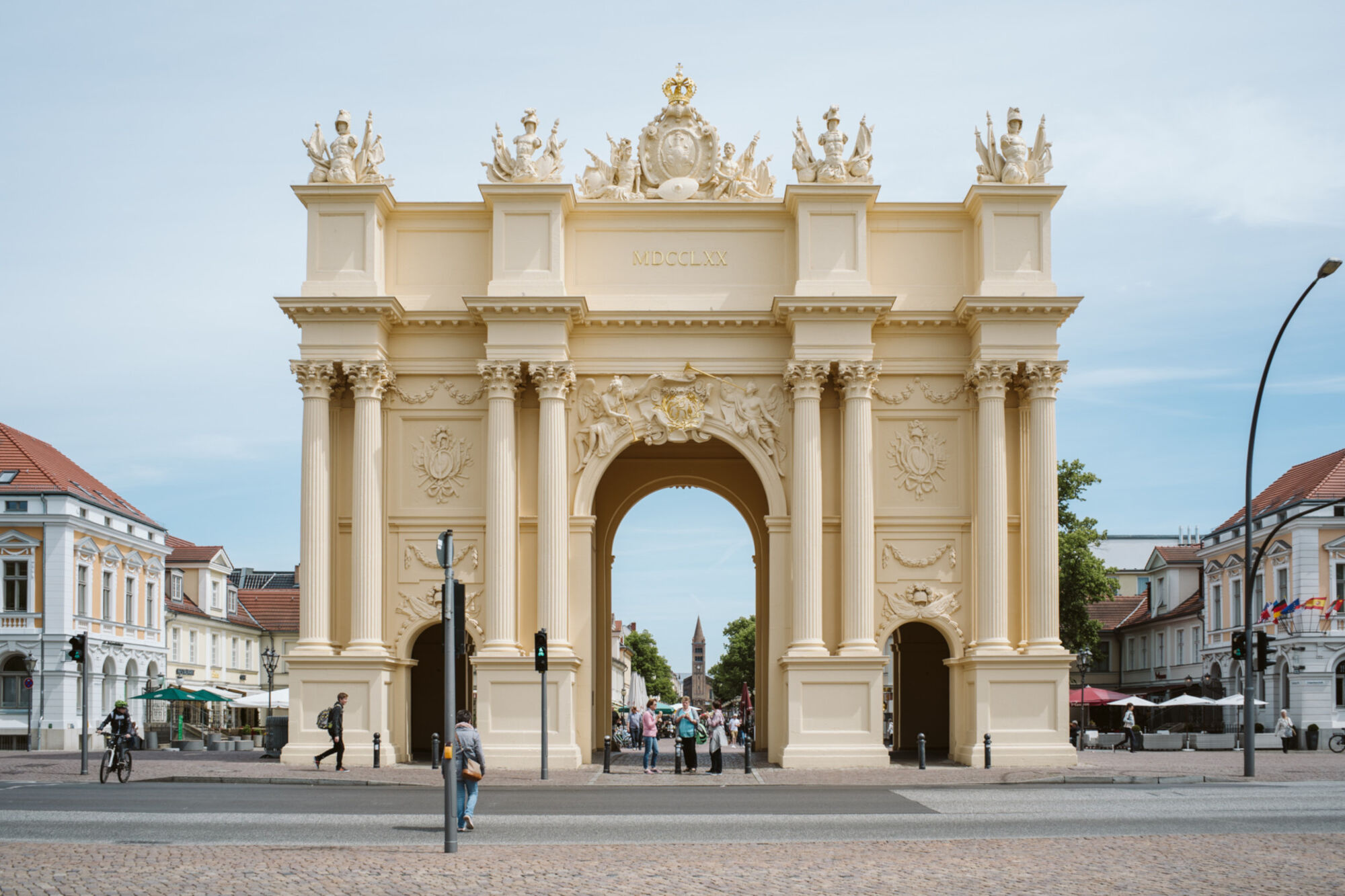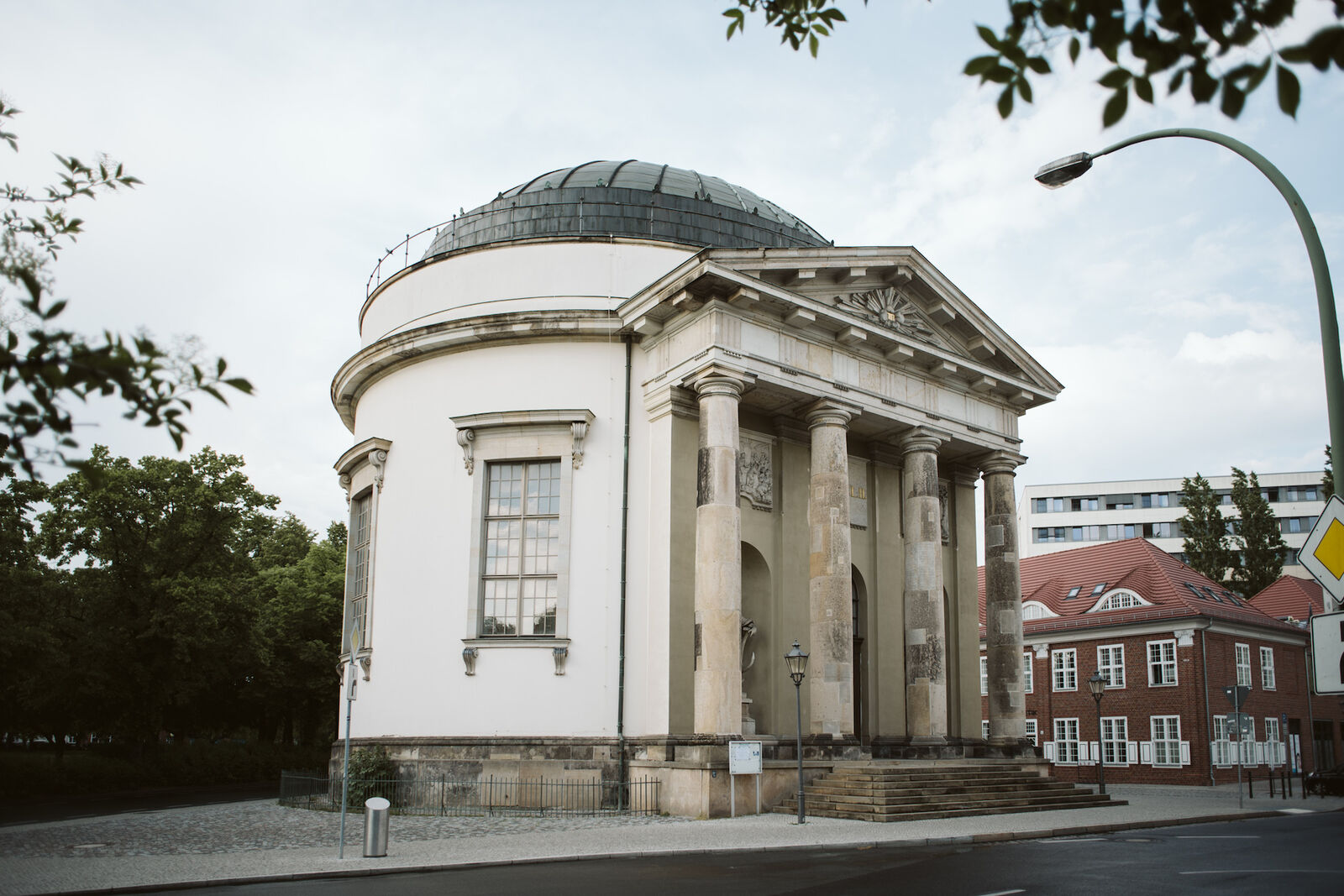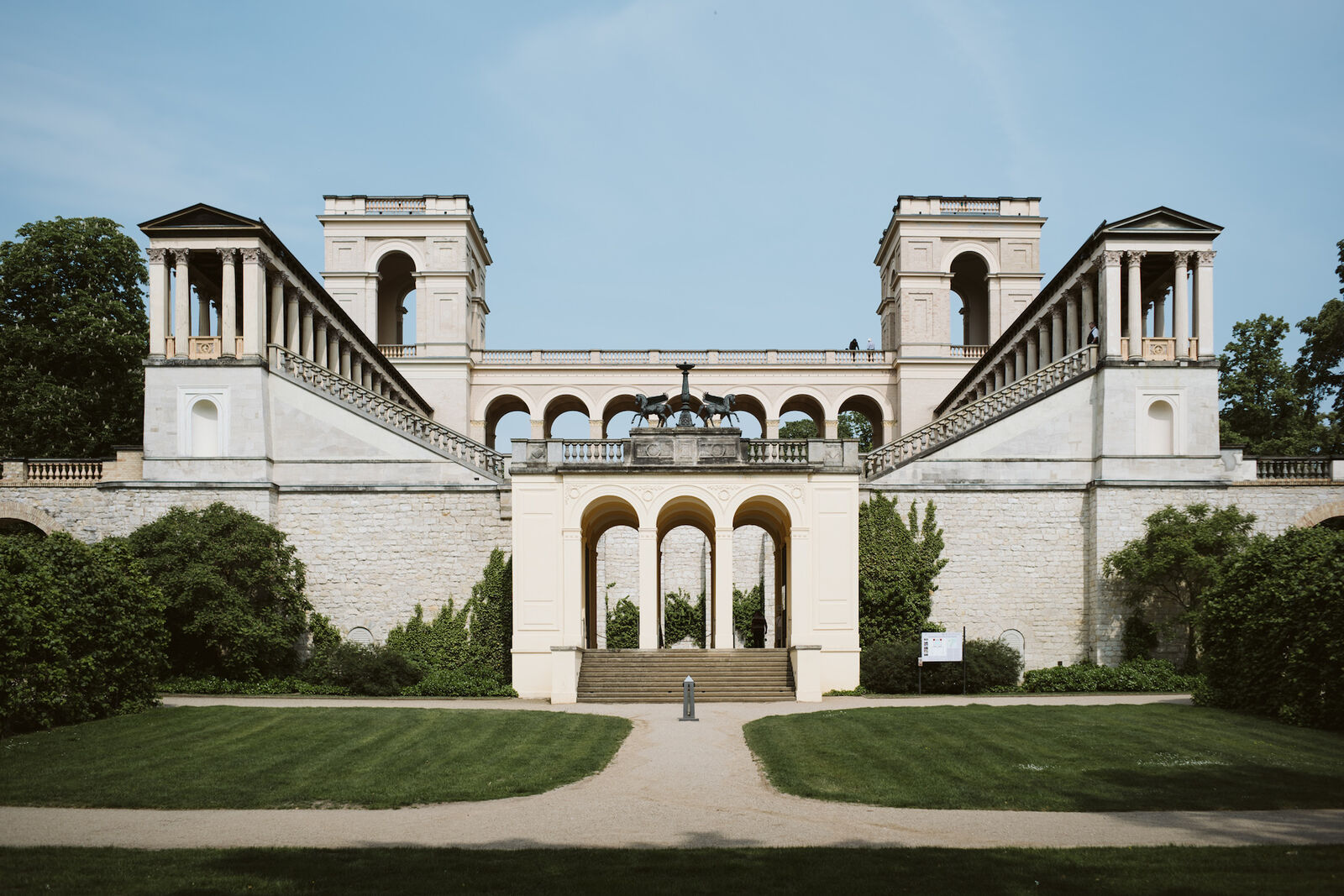
Brandenburger Gate / Arch of Constantine
The gate gleams bright yellow in the sun at the western end of Brandenburger Strasse. It's eye-catching – even from far away. For visitors from abroad, it's occasionally confusing that there's a Brandenburg Gate in Potsdam as well. It's also almost 20 years older than its Berlin counterpart.

Henry Balaszeskul
Brandenburg Gate, Potsdam
Potsdam's role models
The majestic Potsdam archway has its models in Roman triumphal arches, especially the Arch of Constantine from the fourth century. That arch stands right next to the Colosseum in Rome, on the Via Triumphalis, a magnificent road on which the Roman generals paraded triumphantly into the city after victorious battles.
When Frederick the Great had the gate built on this spot in 1770, he himself had returned as a successful commander and victor from the Seven Years' War. So Roman architecture seemed very fitting to him. Ultimately Prussia emerged from the war as a major European power.
In Rome, as in the smaller Potsdam copy, a high gateway for vehicles with a round arch dominates the middle of the gate. The lower gateways on the sides weren't opened for pedestrians until later. At first there were only guardhouse windows.
Two architects
Friedrich commissioned two architects to design it: Georg Christian Unger was responsible for the magnificent side facing the fields and Luisenplatz square, embellished with four pairs of Corinthian double columns. The gate is crowned by a large heraldic cartouche with the Prussian eagle, flanked by Mars and Hercules. Frederick's initials, FR for Fridericus Rex, are displayed in the middle over the central archway, framed by two depictions of Pheme, who personified fame, blowing her trumpet.
The side facing the city, designed by Carl von Gontard, is much plainer. Here double columns also adorn the edges, but there's only one column on each side of the main archway. So Frederick's triumph was meant more to be seen from outside, by those entering the city from the west.
The Brandenburger Gate is one of the stops on the audio tour Italy in Potsdam, which was developed as a city tour for the Barberini App on the occasion of the exhibition Baroque Pathways (13.7.-6.10.2019). The tour, narrated by TV host Günther Jauch, invites visitors to discover 30 buildings and works of art around the Museum Barberini that were created in the 18th and 19th centuries based on Italian models. Download the Barberini App and let yourself be surprised by the many Italian facets of this city.






